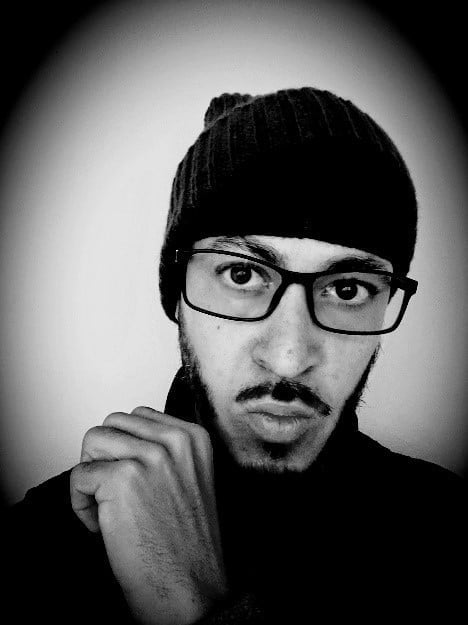On Minority Health Month, Public Health Critical Race Praxis, and a Critical Need for Imagination
Ryan PettewayYou’d be forgiven for not noticing, given the COVID-19 crisis and its devastating impacts on communities of color—impacts that have been, as recently noted, par for the structural racism course. But April was National Minority Health Month (NMHM)—in a Census-counting election year.
Given the relationships between political, social, and economic inequality and population health inequities, you might have expected a timely theme to mark the occasion—something like the importance of Census 2020 for health equity. Or the health equity impacts of voter suppression, or the links between mass incarceration, voter disenfranchisement, Census counts, and health equity. Or perhaps something on the links between health equity and fair housing or food (in)security—two critical areas threatened by policy changes to the Community Reinvestment Act (CRA) and the Supplemental Nutritional Assistance Program (SNAP).
Instead, for the second year running, the Office of Minority Health (OMH) chose physical activity as the theme, featuring daily prompts/activities highlighting “simple steps people can take to maintain and sustain an active and healthy lifestyle while reducing stress and anxiety.” Some may see this as commendable or simply par for the traditional public health course. Others might be concerned that this methodologically individualist, ahistoric, and decontextualized theme was prioritized again. I’m in the latter category.
In short, to continue to push individual behavior change initiatives in the face of structural challenges—challenges that are certain to be compounded by COVID-19—is an insult to communities of color and an affront to the researchers, practitioners, and community leaders doing our bests to press for change. Here, I offer a brief critique of the chosen theme, then outline the potential value of a public health critical race praxis in deepening OMH deliberative processes for developing future thematic priorities that better capture the spirit of what it means to truly advance health equity.
Individual Physical Activity and/vs. Population Health Equity
Physical activity (almost) literally has been the “milk does a body good” of public health since the US Surgeon General’s initial guidelines in 1996. We’ve since had numerous campaigns encouraging us to ignore all manner of social, economic, geographic, topographic, and climatic contexts and be “healthy and active,” to “Play 60,” and “move your way.” And still no campaigns have explicitly recognized the very racialized and class structured contexts of the daily living environments with and within which many people of color must contend—from contaminated soil, community violence, and crumbling infrastructure to lack of greenspace, toxic air, and higher heat indices.
Admittedly, it’s completely possible that I missed the new groundbreaking study that showed that brisk walks reduce institutional racism by 15%. Or, most likely, this study doesn’t exist. Yes, physical activity does a body (and mind) good, but these sorts of lifestyle campaigns do absolutely nothing to address the root causes of health inequities—including those related to physical activity. So, “let’s move” on… to something more sophisticated.
A Role for Public Health Critical Race Praxis
Previous NMHM themes have more explicitly centered “equity,” so it’s clear that some institutional capacity exists for broader thinking. How can we move the discourse and action forward—to revisit those themes and deepen commitments therein?
As a starting point, OMH leadership could consider using a critical race theory lens in determining annual themes. Specifically, OMH could benefit from applying the principles of a public health critical race praxis, namely: structural determinism, critical approaches, and disciplinary self-critique.
First, by acknowledging and centering structural determinism, OMH can more appropriately develop and frame thematic foci that do not simply repackage neoliberal, self-help, bootstrap narratives of how to be healthy. As recently noted in regards to COVID19, communities of color cannot simply “walk off” the systemic effects of racial capitalism. Similarly, we cannot individual-intervention our way out of population health inequities created by systems—especially those related to physical activity—simply by racially/culturally “tailoring” these decontextualized, oppressive narratives: individualist neoliberal public health with melanin is still individualist neoliberal public health. This personal responsibility ideology is not only incongruous with health equity, it’s anathema to public (i.e. population) health itself: population health inequities are not simply a product of aggregated individual behaviors. Individuals do not have the capacity/power to act upon the broader forces constraining and shaping their (physical activity) behaviors—this is the very reason public health exists.
Second, those within OMH tasked with determining thematic priorities and setting broader framing agendas could benefit from engaging the principle of critical approaches. This principle encourages careful consideration of dominant cultural values and epistemologies within public health, and the influence of individuals’ social positions in maintaining or challenging pervading ideologic and practice norms. To what extent have we been conditioned through our decades of public health training and history to see the behaviors of black and brown bodies as problematic—more so than the social, economic, and political forces that govern the possibilities of black and brown people? Choosing this sort of theme suggests an institutional culture steeped in/corrupted by personal responsibility politics—a politics that obscures structural causes of racial health inequities and masks the racism latent within individualist paradigms.
Finally, we could all benefit from spending some time looking in the mirror and doing some disciplinary self-critique. Let’s do some self-interrogation: Is this what our vision of pursuing health equity looks like—pushups to end school pushout, Pilates to end racialized policing, isos to end ICE? Is this the limit of our imaginations—that we will literally powerwalk ourselves to the promised land of health equity? We need power to walk the talk, not powerwalking. So we should ask ourselves how many “steps” we can take individually and, more importantly, institutionally.
Then, let’s turn out all the lights, light a candle, and say “health equity” five times. If we make it out alive, let’s show up better next time—because we wouldn’t want the country to think that we’re stuck on page nine of a 35-year-old report on minority health.






All comments will be reviewed and posted if substantive and of general interest to IAPHS readers.